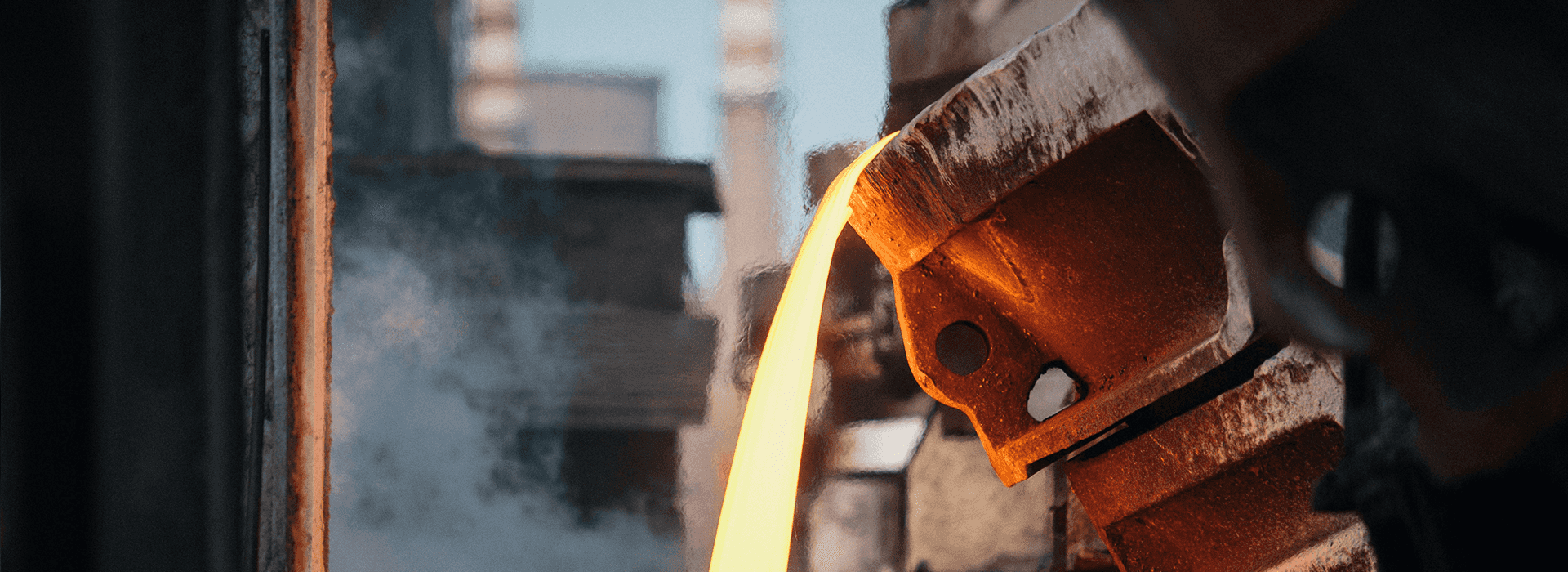
Casting
Basics of casting: Insights into the process and its applications
Casting
Casting: The essence of the shaping process
Casting is one of the oldest and most widely used manufacturing processes for the production of components. For this purpose, the desired material - typically metal - is heated to the melting temperature. The liquid metal is then poured into a mold, which represents the negative shape of the part to be manufactured. After the material has cooled and solidified in the mold, the finished part is removed from the mold. Depending on the casting process, the mold is either destroyed or the part is removed from a reusable mold. Casting is a popular process that is particularly characterized by the versatility and efficiency. It is possible to produce both simple and complex components and sizes cost-effectively. For this reason, casting is represented in a variety of industries.
Casting - advantages & procedures
Casting: Opportunities and process
Advantages of casting at Line Up
Casting
Sand casting
Sand casting is a casting process in which the mold is made of sand into which the molten metal is poured. The sand mold consists of a mixture of natural sand, clay and water. Once the molten metal has solidified in the mold, the sand mold is destroyed and the casting is removed. Post-processing is often required for sand casting. Sand casting is a cost-effective casting process that can also be used for small series.
Permanent mold casting
In permanent mold casting, the molten metal is poured into permanent metal molds. These molds can be used multiple times. Permanent mold casting is particularly characterized by a high surface quality and dimensional accuracy and is often used for the series production of metal parts.
Centrifugal casting
Centrifugal casting is a casting process in which the molten metal is poured into a rotating mold. The centrifugal force creates a dense and uniform structure. Centrifugal casting is often used for the production of cylindrical components such as pipes, rings and bushes. Centrifugal casting is characterized by good material density and material properties.
Investment casting (lost wax process)
Investment casting, also known as precision casting or lost wax process, allows the production of cast parts with very smooth surfaces and tight tolerances. In this casting process, the model of the part is first made of wax or another meltable material. The model is then coated with a refractory material. This results in the necessary casting mold. After the wax has been melted out, the liquid metal is poured into the resulting hollow form. Investment casting is particularly characterized by the smooth surfaces of the casting and the ability to produce complex geometries.
Vacuum casting
Vacuum casting is a special casting process in which the casting mold is placed under vacuum before the molten material is poured in. This minimizes the formation of gas bubbles and oxidation. Vacuum casting is often used for high-quality applications where a high density and purity of the material is required. Due to the higher quality and fewer inclusions of the casting, vacuum casting is also associated with higher costs.
Metal processing - Inquiry
Line Up: Start your procurement process now
Make an inquiry
Receive offer
Place order
Receive products
Other manufacturing processes of metal processing
Realize your products with the metal processing of Line Up
Contact
Ready to Line Up?
Contact us!
Personally there for you throughout Europe and in China. When will you become one of our satisfied customers?




